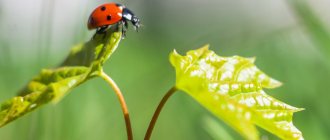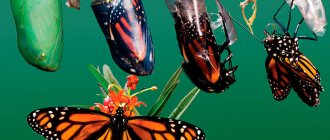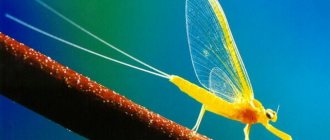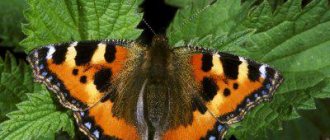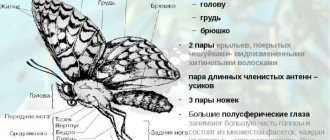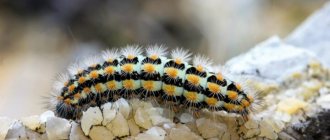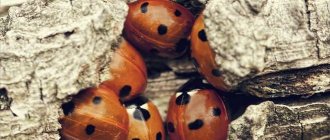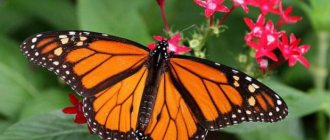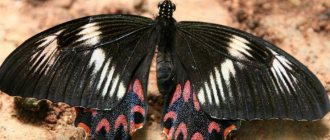Most of us think of insects as crawling and flying creatures that need to be dealt with quickly with the help of something heavy. Most of them spread infection and drink our blood. There is only one category of insects that cannot be classified as hated.
The butterfly catches your eyes and makes you admire it. But have you ever wondered how far its benefits extend? In reality, this winged wonder has much more to offer us than simple visual appeal. Here are good reasons why people should appreciate butterflies more.
This insect is involved in pollination
We know that bees do the main job of pollinating flowers, but we don’t even suspect that butterflies also perform this important task. These beautiful creatures are less suitable for work due to their huge scaly wings. It is very uncomfortable for them to balance on thin legs while inside a huge flower. The body of a bee, unlike a butterfly, is designed for pollination.
Nevertheless, evolution has given lepidoptera some advantages. For example, they are able to fly for much longer, which means they can pollinate flowers over large areas. In addition, butterflies have excellent color perception and, unlike bees, can recognize red. Rest assured that bright flowers in daylight will not remain without pollination.
Tomato leaves provoke diseases. Is it worth getting rid of them?
To prevent children from quarreling, parents built an unusual bunk bed
In Russia, the number of beauty salons decreased by 10% over the year
Stages of reproduction. Transformation of a caterpillar into a butterfly.
Among butterflies, there are very complex forms of courtship during the mating season, which are expressed in special flights and mating dances. And the mating process itself can last several hours. Moreover, females receive from the male not only sperm, but also the supply of micronutrients and proteins they need.
The life cycle of a butterfly consists of 4 stages:
Eggs
Like many other insects, a butterfly's life begins with an egg. Depending on the type of butterfly, they lay eggs on
leaves or branches of plants. Typically there can be up to 1000 round or cylindrical fertilized eggs at a time. The butterfly egg stage lasts 8-15 days.
Caterpillar
From the eggs of butterflies, caterpillars emerge that have a gnawing type of mouthparts, with which they can eat plant leaves, flowers and fruits. Caterpillars have special glands that produce a special substance that hardens when it comes into contact with air. This substance forms a strong silk thread, which over time will become a cocoon.
Doll
Over time, the caterpillars begin to pupate, and the third stage of the butterfly's life cycle begins.
This is what the pupation of a caterpillar, its transformation into a pupa, looks like. The pupa can be elongated cylindrical or round in shape.
Imago (adult, butterfly)
At the last stage, an adult butterfly emerges from the pupa.
This is what the transformation of a pupa into a butterfly looks like.
They keep ecosystems healthy
Butterflies are indicators of ecosystem health and an important link in the food chain. Scientists have discovered that a large number of lepidoptera indicates a good state of biogeocenosis. These cute creatures play a dual role in the food chain. They act as both predator and prey. Lepidoptera feed on plants, but in turn become food for birds and bats. Therefore, any reduction in the number of butterflies can upset the chemical and physical balance in the environment.
The short life span of butterflies makes them react very sensitively to any changes in nature: climate change, weather, the disappearance of certain plant species. The one-day life of butterflies makes migration impossible. Therefore, even with the most minor changes in the ecosystem, they have to show miracles of resourcefulness to survive.
Help monitor climate change
Because they are extremely sensitive to climate change, butterflies have attracted the attention of scientists. Today, science has learned that temperature changes affect the choice of places to lay eggs. In addition, it affects the number of eggs and the survival of larvae. To date, researchers have discovered a connection between the decline in the number of butterflies in a particular region and climate change.
Just extend your hand. Savvy shoppers take the 'far away' bottle of oil
Sofia Ernst admitted that her husband was against her acting career
We pack gifts: run an iron over a napkin and cling film
The most striking example of this is the almost complete disappearance of the birdwing from the forests of Bangladesh between 1999 and 2004. As observations have shown, the main reason was changes in the composition of the flora. But the decline of one species of butterfly in Baja, California, occurred due to abnormal drought and rising temperatures.
Stimulate tourism
The unearthly beauty of butterflies makes them creatures that you want to look at endlessly. This makes it possible to generate significant economic benefits for those regions where rare species live. For example, a nature reserve called the Valley of the Butterflies on the Greek island of Rhodes attracts thousands of tourists from all over the world every year. thanks to the species Panaxia.
And although scientific sources tend to classify this unique creature as a moth, this does not stop travelers. Rare individuals gather in this valley, anticipating their imminent end. It is better to go to the “Valley of Butterflies” at the end of May, since at this time insects are attracted by the pollen of flowering subtropical trees.
Possibility of producing antibiotics
Without antibiotics, it is impossible to imagine treating various types of bacterial infections. However, virus strains are constantly mutating, which causes addiction to drugs. Some butterfly species provide us with antibiotics that can make a difference in saving lives. Lepidoptera are unique in that they produce a chemical composition to attract individuals of the opposite sex. These same substances serve as a means of repelling predators.
Cinema visitors in Russia will be prohibited from bringing in drinks and their own food.
Telecom operators may be required to transfer data of Russian subscribers to Roskomnadzor
How to show interest: the best phrase to start a conversation with a man
Scientists have discovered that the secretion of the meadow moth has a powerful antibacterial effect. This knowledge can be very effective in controlling the growth of gram-positive anthrax bacteria. The vast majority of antibacterial chemicals obtained from butterflies have been shown to be effective in controlling the growth of Staphylococcus aureus.
TOP 10: Incredibly useful things that butterflies do
Most of us perceive insects as something crawling that is best quickly swatted away with a fly swatter. But not all such creatures fall into this category. Butterflies are one of the most popular types of insects, in large part because butterflies are beautiful to look at. However, what many people don't realize is that this winged wonder has much more to offer us than just pleasing the eye. Here are 10 reasons why we should appreciate butterflies for more than just their external beauty.
10. Pollination of flowers
We all know that bees help pollinate flowers, but most people don't even realize that butterflies also perform this task. They are less able to do this because they must balance on thin legs and their body structure is not as suitable for this task as the bodies of bees.
This means that butterflies cannot collect as much pollen on their legs and bodies as bees, but they do have some advantages when it comes to pollination. The most important of these is the ability of a butterfly to fly much further than a bee, which means that it is able to pollinate flowers over a much larger area.
In addition, butterflies have superior color perception compared to bees, which cannot see the color red. This means that butterflies choose bright flowers, which means they pollinate flowers when they are open during the day.
9. Maintaining a Healthy Ecosystem
Photo: sciencing.com
Butterflies are also extremely useful as indicators of the overall health of an ecosystem. A large number of butterflies usually means the ecosystem is in good shape. The reason is that they play a dual role in the food chain - prey and predator. The butterflies themselves feed on plants, while at the same time providing food for birds.
The order Lepidoptera, to which the butterflies belong, is classified by scientists as an indicator species, meaning that any decline in their numbers can be used to detect chemical or physical changes in the environment. Butterflies are particularly effective at detecting subtle changes in an ecosystem because their short life spans make them respond very quickly to such changes.
Meanwhile, their dependence on climate, weather, plants and limited ability to move from their birthplaces make them very sensitive to the slightest changes.
8. Helping scientists monitor climate change
Photo: usnews.com
Because they are sensitive to climate change, butterflies are extremely useful to scientists who monitor climate change around the world. Temperature changes affect which places butterflies choose to lay eggs, the number of eggs they lay, and the development and survival of larvae. There are several examples of how butterfly numbers have declined in a particular region due to climate change. One such example was the almost complete disappearance of the butterfly Ornithoptera meridionalis from the Fashiakhali forest in Bangladesh between 1999 and 2004.
Research conducted by scientists from the Environmental Biology and Biodiversity Lab at the University of Dhaka showed that the main reason for this was changes in the plants that these butterflies feed on. In addition, research by scientists from the National Academy of Sciences in the United States showed that the number of Quino butterflies living in Baja California has decreased significantly due to the too hot and dry climate. Although human intervention also contributes to the decline in insect numbers, the National Academy of Sciences has officially classified this species as one that is vulnerable to climate change, which could push it to the brink of extinction.
7. Tourism development
Photo: worldwildlife.org
The beauty of butterflies makes them insects that we enjoy looking at. This can be economically beneficial for areas where butterflies are abundant. Every year on the Greek island of Rhodes, a nature reserve called Petaloudes (Valley of the Butterflies) attracts thousands of tourists from all over the world to see the numerous Panaxia quadripunctaria Poda that live there. (Although there is ongoing debate among scientific sources as to whether Panaxia quadripunctaria Poda is a butterfly or a moth, most scientific sources tend to believe that it is a moth.)
Butterflies and moths gather in this valley during the final part of their lives. The close of the wet season at the end of May is the best time to see them as the insects are attracted by the scent given off by the valley's trees. Mexico's Monarch Butterfly Biosphere Reserve is also popular among tourists for its butterflies. Monarch butterflies live here. El Rosario and Sierra Chincua, two of the eight butterfly colonies, are open to tourists. El Rosario attracts thousands of people every year, and is especially popular with tourists from Japan, Germany, France, Spain, Canada and the United States.
6. Provision of antibiotics
Photo: Charles J. Sharp
Antibiotics are vital for treating various types of bacterial infections. However, many people don't realize that some butterfly species provide us with antibiotics that could be life-saving. Each species of butterfly has a different chemical mixture used to attract mates, repel predators, and overcome the chemical defenses of its host plant. However, the meadow brown butterfly, common in the UK, produces a powerful antibiotic that is part of this chemical compound.
In addition, scientific research into antibacterial chemicals produced by various butterfly species has shown that almost all of them are highly effective in controlling the growth of gram-positive bacteria Bacillus anthracis, which can be used as the causative agent of anthrax. The vast majority of compounds tested also proved effective against Staphylococcus aureus. This bacterium kills 90,000 people in the US each year and has become resistant to many of the antibiotics currently used.
5. Keeping insects under control
Photo: naba.org
If you are a keen gardener, butterflies can help you get rid of insects that may be threatening your flowers. We usually think of butterflies as eating plants, but some species of harvester butterflies eat aphids. These tiny insects cause many problems for gardeners because they feed on plant sap, causing them to grow incorrectly, become sick, and lose color. Aphids also transfer viruses from plants to fruits and vegetables such as cucumbers, tomatoes, raspberries and strawberries.
Recognized by its distinctive orange, black and white wings, the harvester butterfly is not found everywhere and is the only species in the United States that eats insects rather than plants. But she is certainly more than just a beautiful butterfly.
4. Removal of waste from the environment
Photo: butterfly-conservation.org
Besides ridding our gardens of pests, we can also thank the butterfly for eliminating unwanted waste from the environment. Some butterfly species destroy unnecessary waste, such as animal feces and rotted animal flesh, both of which provide the butterflies with essential nutrients. One species of butterfly that eats waste instead of plants is the purple Emperor butterfly, found mainly in the south of England and found high in the treetops. Considering that most people would rather not have animal feces and rotting flesh around them, this butterfly does us a great favor.
However, some butterfly lovers who want to catch a glimpse of the Emperor leave rotten meat or fish, animal dung, baby diapers and other goodies around to lure the insect. Other types of butterflies, such as the red admiral and the hackberry nymphalidae, also eat dead animal flesh as it begins to decompose. They need the juices released during this process.
3. Inspiration for artists
Photo: artsology.com
Given the beauty of butterflies, it should come as no surprise that they have inspired artists over the years. This path can be traced back to a painting in the Egyptian tomb of Nebamun, dating back to 1350 BC. e., which depicts hunting scenes and numerous tiger butterflies. At that time, scenes of this kind were commonly used to decorate tombs. They depict the dead to be remembered and what they wanted to be in their next life. The hieroglyphs say that in the painting Nebamun is enjoying the beauty of nature.
Butterflies also attracted Renaissance artists. In Dosso Dossi's painting Jupiter Painting Butterflies, Mercury and Virtue, the artist depicted Jupiter painting butterflies while Mercury sat behind him, preventing Virtue from interrupting Jupiter's work. According to fine art scholars, the butterflies in this painting symbolize the changing creative thought process. Surrealist artist Salvador Dali also had a fascination with butterflies, as we can see in his untitled painting from 1956, which became known as the Butterfly Landscape. It depicts two different types of butterflies on a blank canvas, and Dali's love for them stems from the fact that he loved metaphors and metamorphoses. In his autobiography, Dali associates butterflies with fragility and ephemerality.
Finally, Damien Hirst's 1991 play In and Out Of Love features chrysalis butterflies hatching on canvases. A second version of the play, created for Tate Modern in 2012, caused controversy for causing the death of more than 9,000 butterflies. That same year, Hirst used butterfly wings for his colorful kaleidoscope paintings, exploring the Christian idea of the butterfly representing the resurrection and the Greek idea representing the soul.
2. Promoting technological breakthroughs
Photo: Science Daily
Butterflies also play a key role in the development of new technologies. For example, Mark Miles, a graduate of the Massachusetts Institute of Technology, realized that the color of a butterfly's wings does not come from pigment, but is formed by plates covering the wings that disrupt the wavelengths of reflected light. He applied this concept to on-screen displays for technical devices, which must display vibrant colors while being contained in a thin package. Qualcomm used this technology to create its Mirasol screen.
Elsewhere, a research team from Shanghai Jiao Tong University is working on a carbon film inspired by the black wings of the Red Helen butterfly that can absorb light almost completely. This allows the butterflies to stay warm. It is hoped that the carbon film can be used to develop more efficient solar technologies needed by humans.
1. Maintaining our mental health
Photo: The Guardian
We have already found out that butterflies are beneficial in maintaining our physical health, but they are also beneficial for our mental health. The famous British naturalist Sir David Attenborough recently mentioned that watching butterflies helps us avoid stress and has a beneficial effect on humans.
As a result, UK mental health charity Mind has supported butterfly conservation project The Big Butterfly Count on the basis that research shows a clear link between connection to the natural world and reduced levels of anxiety and depression. With all this in mind, we can easily understand why the Monmouth County Mental Health Association chose the Monarch butterfly as its official symbol.
Control the number of insects
If you are an avid gardener, you probably know that butterflies help get rid of insects that threaten your many flower collections. There are species of Lepidoptera that feed not only on plants, but also on aphids. This tiny pest leaves your shrubs lifeless and dry. You have seen the savior of your fruit and berry bushes more than once. Its distinctive features are orange wings with black and white patterns.
Lifestyle of butterflies
Most species of Lepidoptera are diurnal. They feed on flower nectar, pollen, fruits (usually overripe and rotting), tree sap, honey, etc. There are also predators among butterflies, although this is very rare. They feed mainly on the blood of large animals (they pierce the skin with their proboscis).
Several hundred butterfly species migrate throughout the season. Uniting in huge flocks, they make long flights over long distances (usually to warmer places). This looks amazing!
Remove environmental waste
They free our gardens from aphid infestations, and we can also thank them for cleaning up the environment. Several species of adult butterflies process particles of excrement and dead animal flesh cells. We all know about feeding plants with organic fertilizers. And now we have learned that butterflies also need vital nutritional supplements. For example, the purple emperor prefers to eat waste and live in treetops.
Mars may hide large amounts of water beneath its surface
The guy “challenged the carpet to a duel”: a harsh way to do housework (video)
Choosing onion sets: rules that will allow you to collect juicy and large onions
Most people try to stay away from rot and stench, and this butterfly does a great job of doing that. It is curious that some enthusiasts, trying to feed the purple emperor, leave rotten meat, fish, manure and even used baby diapers as bait. Other butterfly species that feed on dead flesh include the hackberry nymphalid and the red admiral.
Butterflies: the most beautiful types
Butterflies have long attracted attention with their beauty and unusual shapes. Here are five types of the most beautiful butterflies:
Swallowtail
Carl Linnaeus named this species of butterfly in 1758 in honor of the mythical healer, the son of Asclepius. According to legend, Machaon treated the Greeks during the siege of Troy.
There are 37 known subspecies of these insects. They live in Europe, Asia, North Africa and North America. The species is listed in the Red Books of several countries.
Butterflies can be recognized by the unusual color of their wings, in the corner of which there is a dark red spot with a black border. The pattern of the front wings is a combination of black and yellow, while the rear wings are blue and yellow.
Photo: flickr.com: UGC
Peacock eye
The Latin name for this butterfly is Inachis, a reference to the ancient Greek god of rivers Inachus. Butterflies with bright red wings, reminiscent of a peacock, and blue-black dots, reminiscent of eyes, live in Eurasia and Japan.
This species is one of the longest-living butterflies. In the steppe and forest zones it occurs in one generation, and in the Ciscaucasia and Crimea it is able to overwinter and produce a second generation. Butterflies appear in the first month of summer and can live for nine months.
Photo: flickr.com: UGC
Madagascar comet
These butterflies are endemic and can only be found in Madagascar. These are nocturnal creatures of large size. The wings can reach 180 mm in span. On the lower wings there are “tails”, thanks to which the species is nicknamed a comet. Their length reaches 16 cm.
These butterflies live up to five days and do not require feeding. They lack a proboscis, which allows them to feed on other butterflies. They can be recognized not only by the unusual shape of their wings, but also by their bright yellow color and brown eyes on the wings.
Photo: ru.wikipedia.org: UGC
Greta Oto
A species of butterfly called glass butterfly because of its transparent wings. Lives in tropical forests of Central and South America. Reaches a length of 3 cm. The wingspan of an adult is 6.1 cm.
Greta Oto changes color several times before acquiring transparent wings. So, its caterpillar is green with bright purple and red stripes, and the pupa is silver in color.
The glass butterfly travels up to 19 km per day and can reach a speed of 13 km/h. Transparent wings protect the insect from birds during migration. In addition, the caterpillar accumulates enough toxins to make the butterfly poisonous.
Photo: flickr.com: UGC
Peacock-eye atlas, or Prince of Darkness
One of the largest moths in the world. Lives only in Asia. With a wingspan of up to 30 cm, it has a disproportionately small body.
The name "Atlas" is a reference to the titan from ancient Greek mythology. The Chinese call the butterflies snakehead moths. The end of the upper wings of insects resembles the head of a snake - this is a natural defense mechanism against predators.
Despite the menacing name, butterflies are completely harmless. They live only a few days and do not need food. In Asia, they are considered relatives of silkworms and are used for textile production. In some Asian countries, Atlas cocoons are used as wallets.
Photo: ru.wikipedia.org: UGC
Butterflies are extremely diverse. Among them there are diurnal and nocturnal species, vegetarians and predators, as well as those who do not need food at all. Each stage of their life (from egg to adult) is an independent life cycle. Since ancient times, they have surprised people with their unusual appearance and made them admire their beauty.
Inspire artists
All types of butterflies are incredibly beautiful, so we shouldn't be surprised that they have inspired artists over the years. Even in ancient Egypt, their images decorated the tombs of the pharaohs. It was believed that a butterfly that lives for one day symbolizes the world of the dead. These beautiful creatures occupied a central place in the paintings of Renaissance artists. Among the more recent masterpieces related to lepidoptera is a painting by Salvador Dali, painted in 1956. In his autobiography, the master associates these heavenly creatures with fragility and ephemerality.
Description of butterflies
The wingspan of various species of butterflies ranges from 0.4 to 31 cm. The largest representatives of the order are Tizania Agrippina and Queen Alexandra's Birdwing, the wingspan of both reaches 31 cm. On average, the size of butterflies rarely exceeds 5-10 cm, especially when talking about Europe and Russia.
The development of Lepidoptera occurs with complete transformation. The eggs hatch into larvae (caterpillars), develop, grow (eating vegetation), and then turn into pupae, from which beautiful butterflies hatch.
Lepidoptera have a body structure typical of insects, consisting of 3 segments: a small head, thorax and abdomen. The body is covered with a hard chitinous cover, which performs protective and supporting functions. There are compound eyes and a pair of antennae (they detect odors and air vibrations). The wings of insects are usually covered with small, flat scales, which is how the order got its name.
The appearance, patterns and color of the wings of different species of butterflies can vary greatly. Some species, in the process of evolution, have acquired wing colors that blend with their habitat, which increases the survival rate of insects. Other species, on the contrary, stand out in the area with their bright colors. And in some species the color can even be optical (depending on the refraction of light). There are so many variations in the color of insect wings that it is not possible to identify something common among all species. It is thanks to this that butterflies have achieved such popularity. They are considered one of the most beautiful insects on the planet.
Assist in the development of technological innovations
Butterflies play an important role in the development of modern technology. The developers realized that the color in a butterfly's wings is not the result of pigment. It turned out that this depends on small plates that refract light waves. Now this knowledge has become part of ultra-thin gadget screens that offer users super-vivid colors. Currently, Chinese scientists, using the knowledge gained, are working on creating a unique carbon film.
